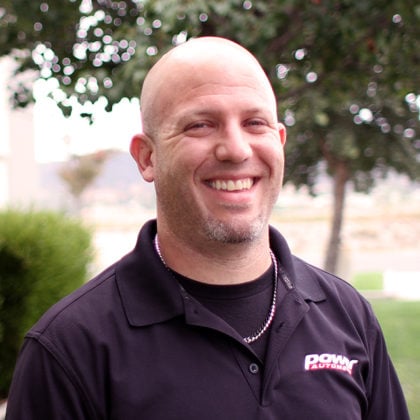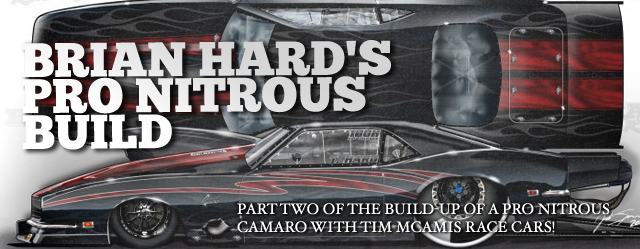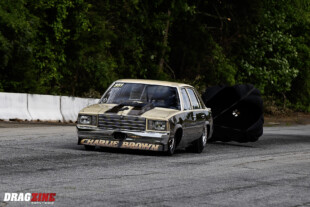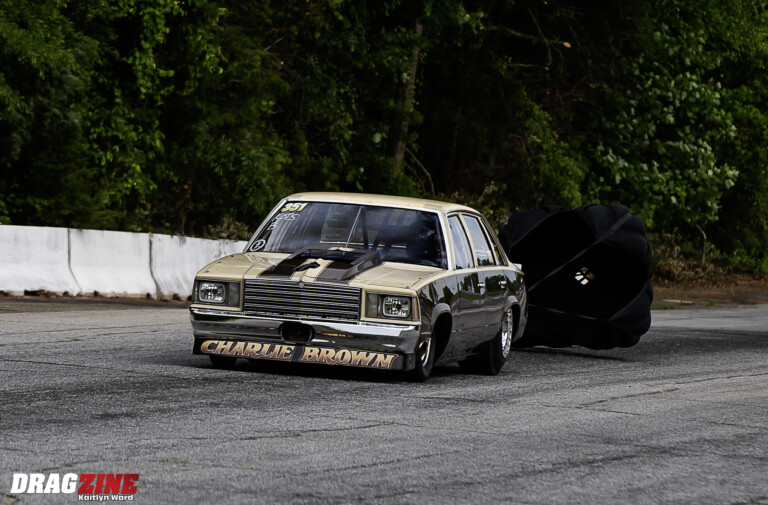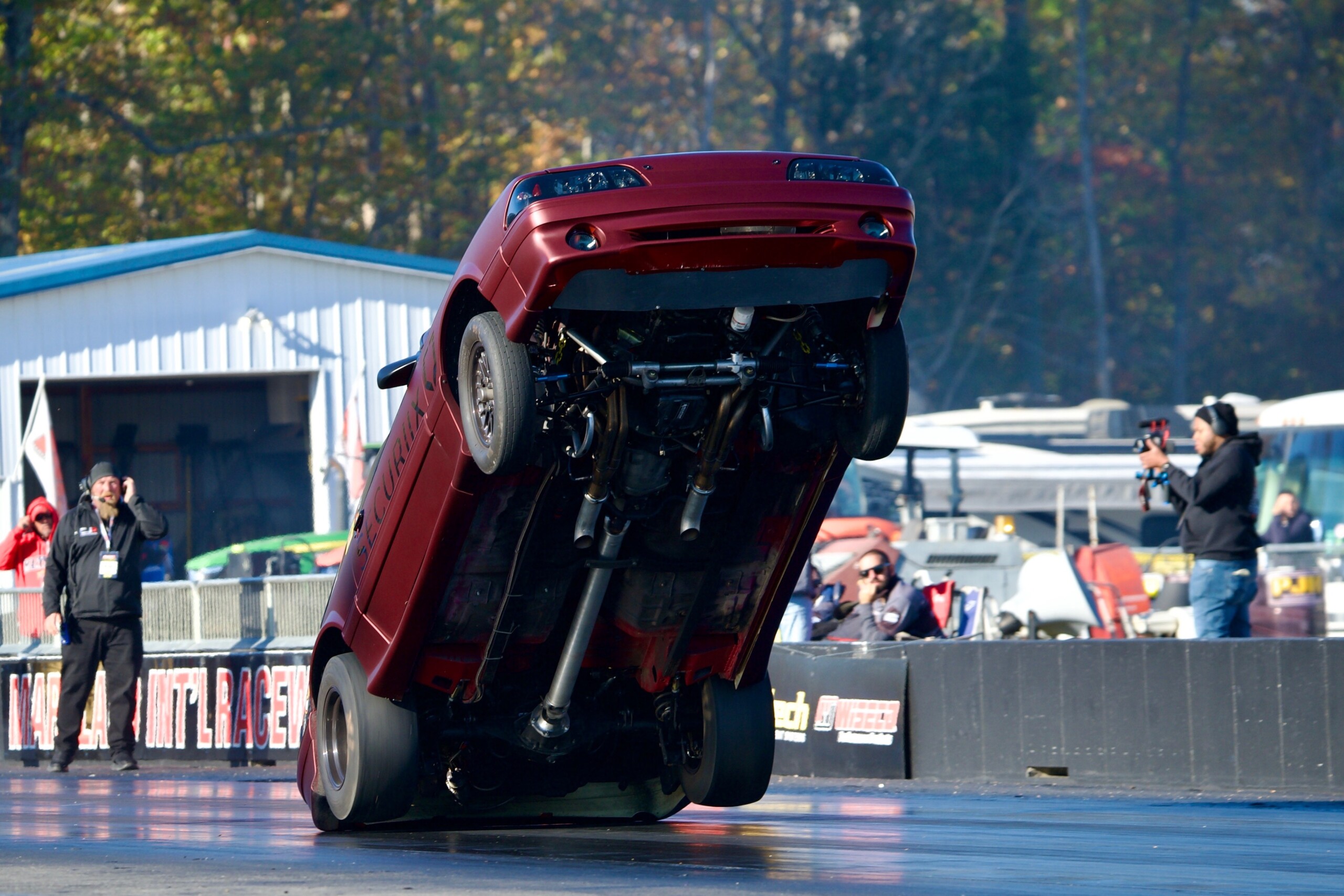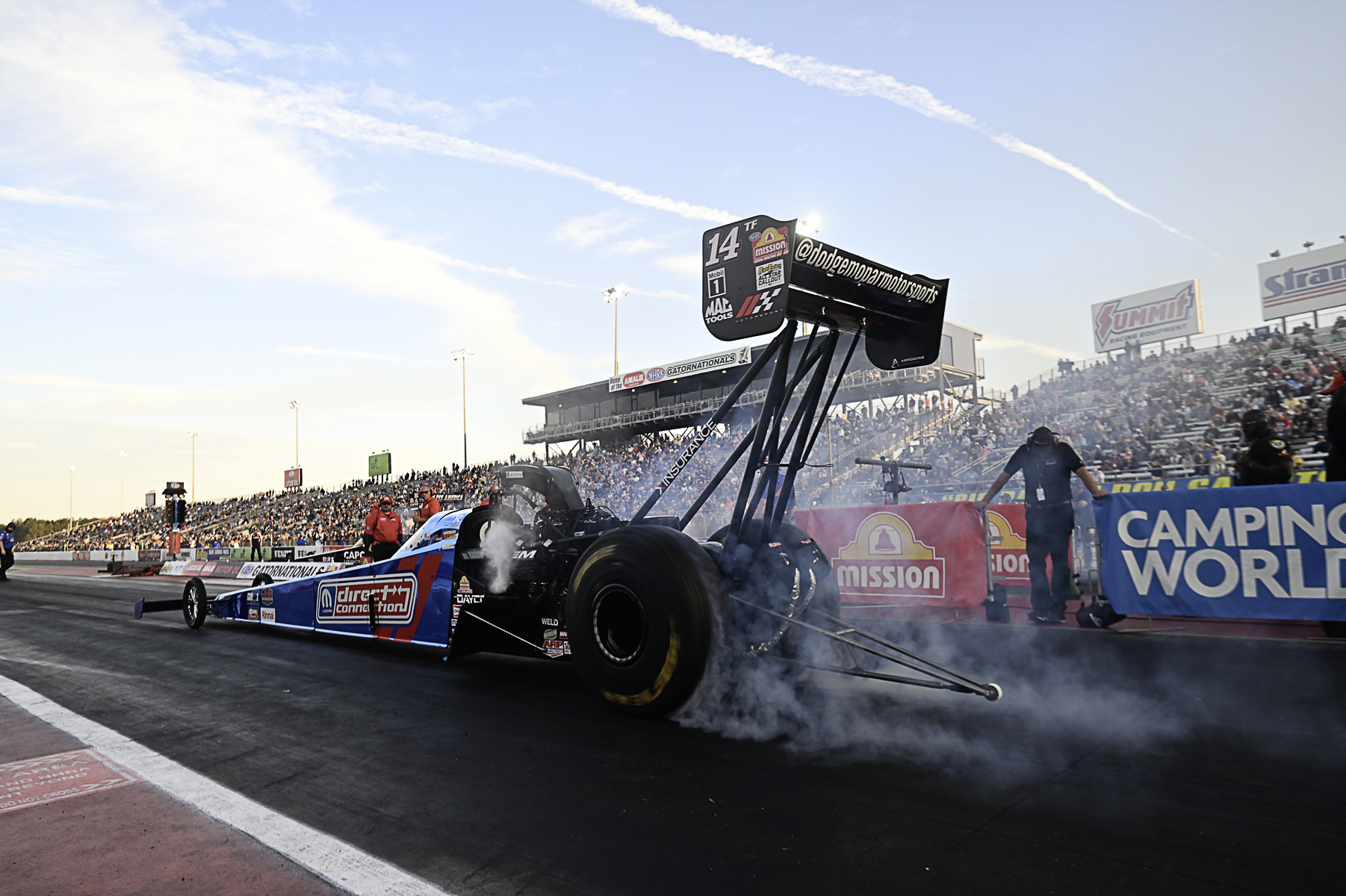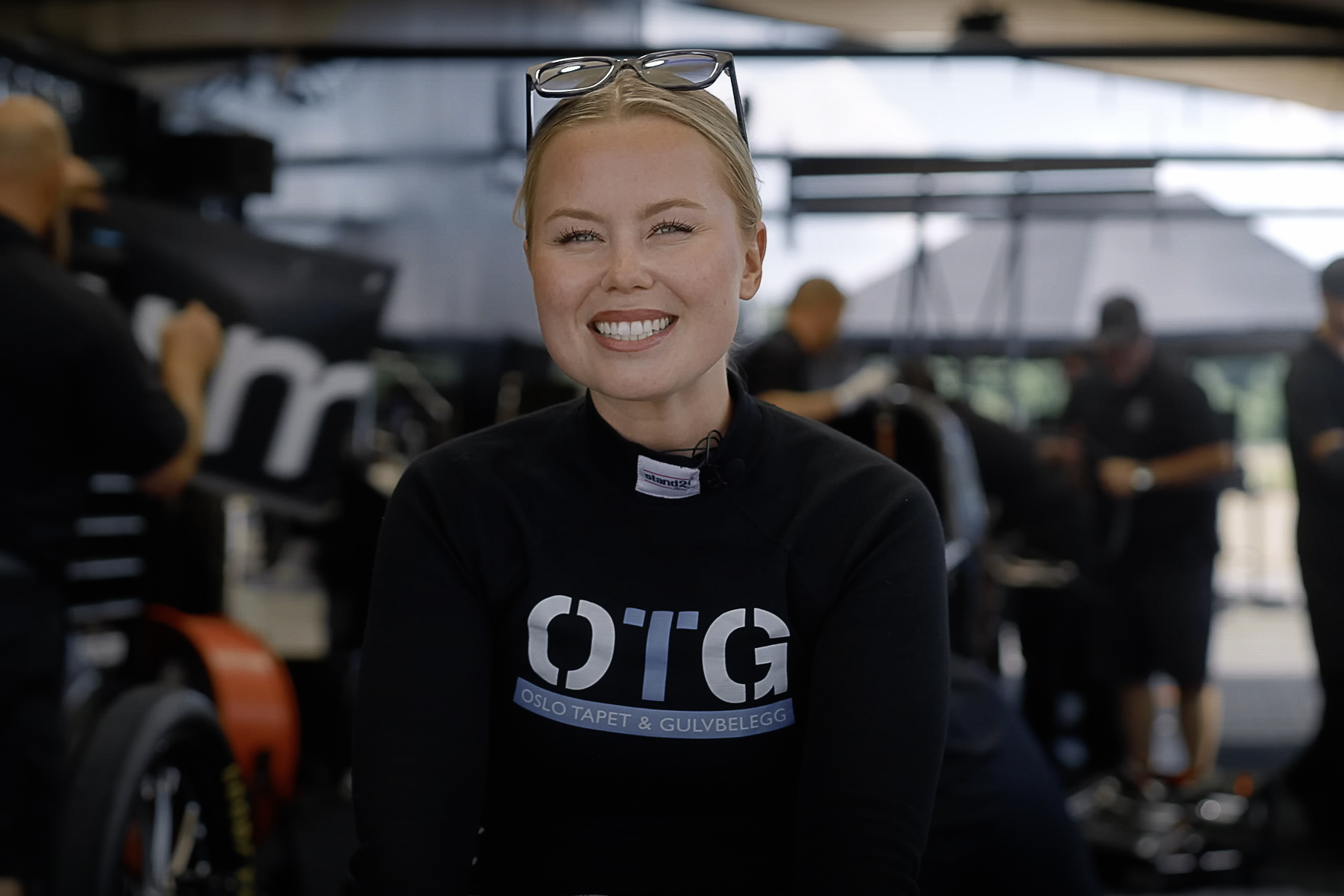A few weeks ago we brought you the Dragzine-exclusive first installment of Brian and Tyler Hard’s 1968 V4 Pro Nitrous Camaro that’s under construction at Tim McAmis Race Cars in Missouri. In the first article, we detailed many of the finer points of the basic chassis construction, from the 25.1E-spec cab to the titanium tail section and even the details of how the carbon-fiber body is constructed at the on-site building of Velocity Composites. We’ve got the second installment of the multi-part article all queued up for you this week, so let’s get right to it!

The chassis main structure is complete and the team is ready to start mounting the engine and transmission along with most of the chassis components. A fixture locates the engine and transmission that is keyed to the chassis table, which allows the engine to be mounted on-center without checking it manually.
Once the basic chassis sections are constructed, it’s time to turn the attention to all of the details, and on a full-chassis build like this one, there are many (and we mean many) details that need to be tended to, all in a very specific order as the placement of each component can directly affect the next component in line.
This is a close up detail of the left side double frame rail being fit in place. A 1.25-inch diameter tube will connect the upper and lower frame rail and then a laser cut tab will connect that tube to the midplate. This will make for a very solid mounting platform for the center of the car.
In fact, each of these details is figured out by the McAmis team before a single section of pipe is ever laid on the table to ensure that the final product will perform as advertised and intended – it’s part of what makes each McAmis race car one-of-a-kind. Since every car owner and driver are different, fitment and placement of these items is critical.

A mockup trans is used when setting up the engine and transmission mounts. This car is going to use a Rossler TH400, and the facility has over 30 mock-up transmission combinations so they can cover every customer’s needs.
The McAmis team has a couple of tricks they rely on to make the engine and component mounting process simpler. As there have been hundreds of cars developed at McAmis over the last 21 years, they have a pretty good handle on what it takes to make the whole vehicle come together at the end of the build.
As we’ve seen throughout the first segment of this build, some of the proprietary tools and fixtures that the McAmis team uses are tools born of necessity; that is, they have been created where no tool existed to previously achieve the final goal. In this case, they have a fixture that mounts to the chassis table to help locate the engine and transmission combination, making the manual measurements a thing of the past – the tool is more accurate than a “guy with a ruler”.
Here, the Racetech seat is being mocked up for mounting. McAmis remarked, 'We feel this particular seat is the safest one on the market today. TMRC pioneered the use of these seats over 8 years ago. They are not cheap but at 250 MPH what would you be comfortable with?'
A Pro Nitrous build like this one simply requires a double-framerail design – there are no compromises. In order to keep the car locked down and going straight down the track on every pass without twisting, TMRC adds the second rail to keep the chassis in check.
These images show how the mid plate and double frame rail are tied together along with the upper mid plate support tube.
Although the 25.1E specification required for the car’s elapsed times and speeds does not require this second rail, McAmis’ experience tells him that it does. The stiff chassis will help to ensure that suspension adjustments that are made are consistent and repeatable.
Double frame rail and uprights and diagonal tubes. Notice how the .750-inch diagonal tube on the left side is bent and the right side is not. This is for seat clearance.
At this point the team moves to the front end of the car to get the front suspension squared away. As we discussed in the last article, they use an adjustable upper strut mount in order to maximize suspension travel while not impacting ground clearance.
Struts being mocked up for mounting. At this point the control arms are fabricated and the rack and pinion is mounted along with the tie rod tubes.
According to McAmis, “We have a huge library of driver sizes and weights to set up the steering and pedals from. Some drivers still like to come in and get fit personally. They will usually spend 3-4 hours moving things around where they want and most of the time it ends up right where we had it when they arrived. It doesn’t matter to us but the more input we can get from the driver and team the better the end product will be.”
A few images of the driver fitment process - the pedals, steering column, and seat are all located at this point before final welding begins.
This shows the throttle pedal mount and pedals which are also titanium. When building an ultra-light car no stone is left unturned when it comes to weight savings.

Parachute handle mock-up. When the car is complete, it will utilize one of TMRC’s carbon fiber parachute handles. Every chassis includes the air release parachute handle and makes it easy later on to tie in the Electrimotion Safety Shut Off Device.
The Shut Off Device has come into play over the last several years, as it automatically turns off the fuel and ignition and deploys the parachutes once the car has crossed the finish line. McAmis believes in its use as there is no such thing as too much safety – and in the event of a mishap in the driver’s compartment, having a secondary check-valve, so to speak, can potentially save a life. The use of these devices are required in the X-DRL and recommended in the ADRL’s Pro Nitrous classes.
Mocking up the fuel cell and pump – all components are simple mock-up pieces so that there is no chance of scratching the actual components that will be put on during final assembly.
On past lightweight builds, TMRC has constructed the front section from titanium which has now been adopted throughout the industry. With increased concern for safety, 4130 chromoly is now used in this area to better withstand a frontal impact over a bolt-on titanium section.
Lightweight cars like this Pro Nitrous build have an extreme focus on weight distribution and overall placement of components – each one will affect how the car will scale out at the end of the build process, and the McAmis team takes the component weight into account during the initial design process.

Fire bottles are next. This particular build will have the bottles mounted up front for better weight distribution.
The liberal application of carbon fiber and titanium in every place of the build where those materials can be utilized is one of the hallmarks of a McAmis build. Getting rid of every ounce of unnecessary weight (especially unsprung weight) is critical to their mission of building the customer the most accurate, best-performing car that is possible under each build’s class rules.

This view shows the Racepak Data Acquisition mount. It is constructed from titanium and attaches to the chassis with sleeves.
During this period miscellaneous tabs are also mocked up for mounting before they move on to mounting the body.
As you can see there are a multitude of small details throughout the entire build. From start to finish, each one needs to happen, because the next one depends on the last one, and if one of them is missed or done improperly, an entire section of chassis could need to be redone. At this point the engine and transmission mounts along with the rest of the component sections are figured out and the chassis itself is just about wrapped up. Our next installment will be centered around the mounting of the composite body and should be ready for you to view in another week or so – stay tuned as we continue to follow along with the team at Tim McAmis Race Cars on this awesome build!


